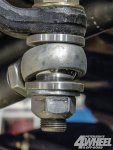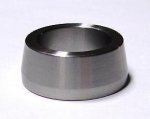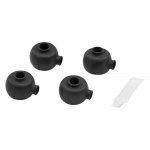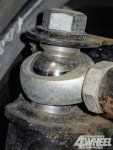DOT Approved?
Peanut Butter
Full Time Jeeper
- Posts
- 2,591
- Media
- 37
- Resources
- 1
- Thanks
- 14
- Location
- Boerne, Texas
- Vehicle(s)
- 1979 Jeep CJ7 TH400 Automatic 258 I6 Quadratrac Amc 20 rear & Dana 30 front, 32 x 11.5 x 15 tires. Currently a Complete Custom Rebuild in progress.
Also I own a 2001 Jeep Cherokee, White, all stock with 4.0L. automatic, and police package. Best part of that is it came with leather seats! This package also has the NP242 Transfer Case, 8.25 rear end, and trailer towing package.
I know that they has been a lot of discussion on here with regards to the use of Heim Joints in Jeep suspensions and them NOT being DOT approved.  So I did some digging around on a lot of different government web sites. Couldn't really find anything related to the use of a heim joint as a suspension part. I went to the DOT.gov site and the NHTSA.gov site.
So I did some digging around on a lot of different government web sites. Couldn't really find anything related to the use of a heim joint as a suspension part. I went to the DOT.gov site and the NHTSA.gov site.  So I wrote the NHTSA and asked about the heims. Here is the reply I got:
So I wrote the NHTSA and asked about the heims. Here is the reply I got:
Mr. Vorndam,
NHTSA does not provide “DOT Approvals.” Rather, manufacturers self-certify their products for compliance with applicable Federal safety standards.
Relative to heim joints, there are no Federal safety standards that have requirements for this item of equipment. However, if there were a defect in performance that was deemed a safety concern, it would be covered under NHTSA’s defect authority.
Whether or not vehicles incorporating heim joints can be used on public roadways is a question for the Texas DPS.
Hope this helps.
Regards.
Mike Cole, Chief
Crashworthiness Division
Department of Transportation
National Highway Traffic Safety Administration
Office of Vehicle Safety Compliance
Code: NEF240; Location: W45-311
1200 New Jersey Ave., SE, Washington, DC 20590[/SIZE]
I checked Texas law and could not find any references. I haven't found anybody to write to for calcification. But I believe I can now say that the blanket statement: "Heim Joints are not DOT approved." is not entirely true. They would have to be a reoccurring safety issue to be addressed. If I have missed something here please feel free to speak up.
They would have to be a reoccurring safety issue to be addressed. If I have missed something here please feel free to speak up.  But I hope this helps clarify their usage.
But I hope this helps clarify their usage.  And as with all modifications to OEM vehicle parts, due diligence and proper maintenance must be used.
And as with all modifications to OEM vehicle parts, due diligence and proper maintenance must be used.
Mr. Vorndam,
NHTSA does not provide “DOT Approvals.” Rather, manufacturers self-certify their products for compliance with applicable Federal safety standards.
Relative to heim joints, there are no Federal safety standards that have requirements for this item of equipment. However, if there were a defect in performance that was deemed a safety concern, it would be covered under NHTSA’s defect authority.
Whether or not vehicles incorporating heim joints can be used on public roadways is a question for the Texas DPS.
Hope this helps.
Regards.
Mike Cole, Chief
Crashworthiness Division
Department of Transportation
National Highway Traffic Safety Administration
Office of Vehicle Safety Compliance
Code: NEF240; Location: W45-311
1200 New Jersey Ave., SE, Washington, DC 20590[/SIZE]
I checked Texas law and could not find any references. I haven't found anybody to write to for calcification. But I believe I can now say that the blanket statement: "Heim Joints are not DOT approved." is not entirely true.
 But I hope this helps clarify their usage.
But I hope this helps clarify their usage.  And as with all modifications to OEM vehicle parts, due diligence and proper maintenance must be used.
And as with all modifications to OEM vehicle parts, due diligence and proper maintenance must be used.










